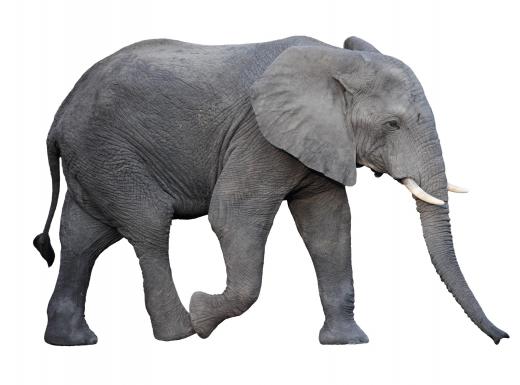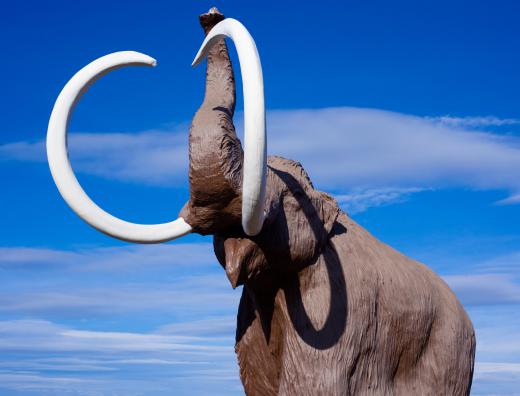What is a Mammoth?
 Michael Anissimov
Michael Anissimov
Mammoths are large proboscideans (elephant-like animals) that lived during the Pleistocene, Pliocene, and early Holocene epochs — 4.8 million to around 4,500 years ago. They were probably made extinct by humans. Mammoths are all members of the genus Mammuthus. They were herbivorous, like their living relatives the elephants, and would have consumed around 550 lb (250 kg) of fresh vegetable matter a day, which would have been difficult in glacier-covered Eurasia.
These animals had long, shaggy hair to help them survive the Ice Age environment, along with massive tusks, used for defense from predators such as predatory felines, canids, and humans. Mammoths were part of a larger trend in evolution in the Ice Age which favored larger animals. These animals are called the megafauna, and most went extinct when their habitats changed and they became susceptible to hunting by humans.

At least 11 species are recognized: Mammuthus columbi (Columbian mammoth), Mammuthus primigenius (Woolly mammoth), Mammuthus subplanifrons (South African mammoth), Mammuthus exilis (Pygmy mammoth), Mammuthus imperator (Imperial mammoth), Mammuthus africanavus (African mammoth), Mammuthus trogontherii (Steppe mammoth), Mammuthus meridionalis (Southern mammoth), Mammuthus lamarmorae (Sardinian dwarf mammoth), Mammuthus jeffersonii (Jeffersonian mammoth), and Mammuthus sungari (Songhua River mammoth).

Despite the modern meaning of the word "mammoth" as an adjective, these creatures were not much larger than today's elephants. Although the largest known species, the Imperial Mammoth of California, exceeded 16 feet (5 meters) in height, weighing as much as 13 tons, most animals were smaller, not much larger than a modern Asian Elephant. There were even three dwarf species, all examples of island gigantism: the Pygmy Mammoth, which lived on the California Channel Islands, which themselves are less than 200 sq. mi. (518 sq. km) in area, the Sardinian Mammoth, found on the Mediterranean island of Sardinia, and the Wrangel Island Mammoth, from an island north of Siberia and within the Arctic Circle, the only known dwarf woolly mammoth.
AS FEATURED ON:
AS FEATURED ON:













Discussion Comments
@momothree: The Ice Ages lasted for 200,000 years. The earth was covered with ice. However, plants did grow and that is what the woolly mammoth fed on. They ate willow, alder leaves, and fir. They also ate leaves from bushes. The temperatures were extremely low and the woolly mammoth developed a very thick coat of hair.
The remains of the mammoths have been found in the northern parts of America, Europe, and Asia. The last of the large woolly mammoths died out about 10,000 years ago.
@momothree: The wooly mammoth lived during one of the ice ages. When scientists named it, they chose the name Elephus Primigenius, which means “first born elephant”. The reason behind the name is because when the fossils were discovered, they thought that it was a very early form of the later elephants. Many other elephants had already been on the earth long before the wooly mammoth appeared.
Does anyone have a little more information about the mammoths, particularly the wooly mammoth?
Post your comments